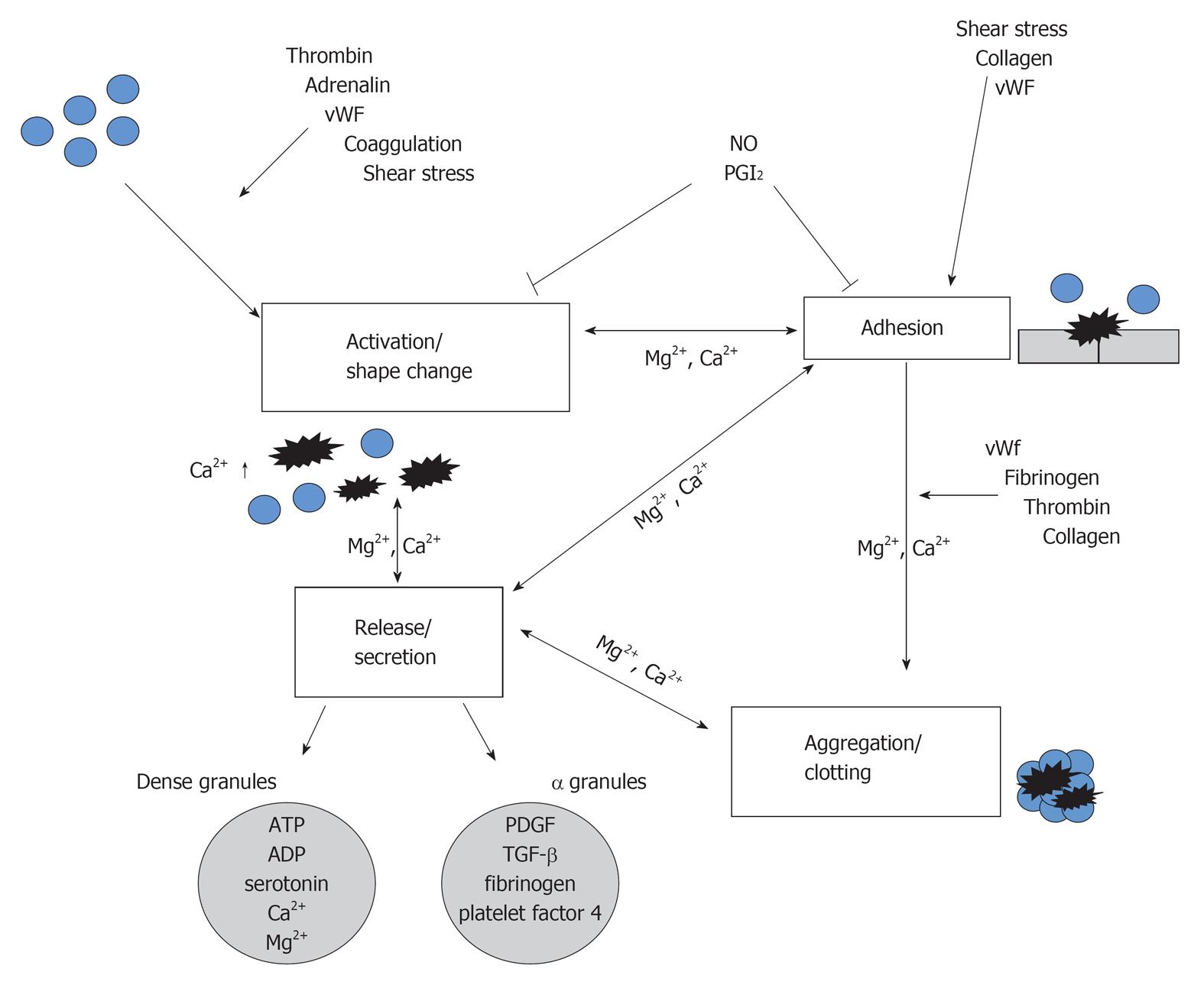Copyright
©2012 Baishideng.
World J Psychiatr. Dec 22, 2012; 2(6): 91-94
Published online Dec 22, 2012. doi: 10.5498/wjp.v2.i6.91
Published online Dec 22, 2012. doi: 10.5498/wjp.v2.i6.91
Figure 1 In the vessel wall an intact endothelium prevents platelet activation, adhesion, as well as aggregation by producing prostacyclin and nitric oxide favoring quiescent platelets (blue spheres).
A damaged endothelium, a platelet agonist [thrombin, fibrinogen, vonWillebrandt factor (vWF), collagen, adrenalin], shear stress or the coagulation process itself can induce platelet activation. During this process a rise in intracellular calcium (Ca2+) levels lead to shape change, where the platelet membrane surface area is greatly increased (black irregular spheres). This is accompanied by the release/secretion of various substances [e.g., adenosine-di- and triphosphate (ADP/ATP), Ca2+, magnesium (Mg2+), platelet derived growth factor (PDGF), serotonin, transforming growth factor-β (TGF-β), fibrinogen, platelet factor-4] from the platelets specialized α and dense granules. The adhesion of platelets is induced under conditions of high shear stress, by exposure to a platelet agonist (e.g., collagen, vWF) or follows the activation process resulting in platelets aggregation and blood clotting. All these processes are Ca2+ and Mg2+ dependent. PGI2: Producing prostacyclin; NO: Nitric oxide.
- Citation: Ehrlich D, Humpel C. Platelets in psychiatric disorders. World J Psychiatr 2012; 2(6): 91-94
- URL: https://www.wjgnet.com/2220-3206/full/v2/i6/91.htm
- DOI: https://dx.doi.org/10.5498/wjp.v2.i6.91









